Roma and the Treaty of Amsterdam: safe European home?
03 April 1999
Tanja Koch-Baerman1
I. Introduction
Europe's political development in recent years has given the continent the prospect of a future undreamed of ten years ago: for the first time in history, the possibility of peacefully uniting the continent seems close at hand. The Roma, Europe's biggest minority, are present in virtually every European country. Since their arrival in Europe, Roma have contributed to shaping the continent and have made it their home. In the last decade, the fall of the Iron Curtain and the process of European integration have increased the potential for the Roma as a people to realise a unified European identity. Some headway has also been made toward the recognition of Roma as a European minority by European organizations such as the Council of Europe and the OSCE. It has not, however, thus far put an end to the facts of life that divide Eastern European Roma from Roma in the West, nor has it eliminated the gulf that separates Roma, especially in Eastern Europe, from the majority societies in which they live.
Nor have Roma been able to assert the political weight proportionate to their numbers: the political decisions for the future of "their" continent have for the most part been made without their participation. In this respect, however, Roma do not stand alone: it has long been recognised that the European Union suffers from what has been called a "democratic deficit". European unity is a process that is important - even vital - for the future of Europe's citizens. It is, however, equally vital that the people of Europe - including Roma - understand the process that is underway and that they use their legitimate influence to bring about the kind of Europe that suits them best.
This article will present some relatively recent European developments brought about by the Treaties of Maastricht and Amsterdam and try to assess the consequences which these developments might have for Roma as a European non-territorial minority. As will be seen, many of the changes currently being implemented concern the rights to free movement and settlement, and especially Roma from Central and Eastern Europe will likely be affected in such areas as border crossing, limited sojourn, immigration and long-term settlement, and asylum.
II. Recent Development of the European Union: Maastricht and Amsterdam
The Treaty of Maastricht, which entered into force on January 1, 1993, has been a major force in shaping Europe as it enters the twenty-first century. It was followed by the Treaty of Amsterdam, concluded on October 2, 1997, and likely to enter into force in the spring of 1999. This is anticipated to be of equal, if not greater importance.
The Maastricht Treaty is officially known as the Treaty on the European Union (TEU) and it transformed the European Community as it was originally defined by the Treaties of Rome in 1958. Before Maastricht, the EC could be seen as an international organisation mainly occupying itself with the creation of a common market for goods, workers, services and capital. With Maastricht, the picture of European integration was completed through the addition of a Common Foreign- and Security Policy (CFSP - the so-called Second Pillar, Article J of the TEU) and a policy of Co-operation in the Fields of Justice and Home Affairs (also known as the Third Pillar, Article K of the TEU). The entity defined by the old European Community and the two new "pillars" was to become known as the "European Union". The Maastricht Treaty as well as the three-pillar structure it created was only superposed on the existing European Community and the EC Treaty, it did not replace them.
The rationale behind the establishment of EU Cooperation in Justice and Home Affairs - which this article will focus on - was the envisaged abolition of internal border controls between the Member States of the Union and the development of a truly internal market. With this objective in mind, the Member States saw an increased need for complementary measures to ensure the simultaneous development of "an area of freedom, security and justice" for the citizens of the Union.
At the same time, attempts to deal with what was perceived as an excessive influx of immigrants, refugees and asylum seekers were seen by the Member States to require a common approach under the aegis of the new European Union. Consequently, the main topics of the Third Pillar concern co-operation in the fields of asylum and immigration policy, the crossing of the external borders of the Union and police co-operation.
The major difference between Community policies under the traditional European Community, or First Pillar of the Union, and the Second and Third Pillar after Maastricht was that the cooperation under the two newly added Pillars remained purely intergovernmental: all measures to be taken under the Second and Third Pillar required unanimous decisions in the Council, the main player in the field of the Second and Third Pillar. The European Commission, traditionally the "motor of European integration" through its exclusive right to initiate secondary legislation within the First Pillar, had only very limited competence in the Second or Third Pillar. The European Parliament played an even lesser role, being only accorded a right to be consulted. Besides, the measures falling under the Second and Third Pillar were completely out of the reach of the European Court of Justice in Luxembourg.
Five years after the establishment of the European Union, the Amsterdam Treaty is building on the foundations laid by Maastricht. From the mere stipulation of objectives in Maastricht, the Amsterdam Treaty goes on to envisage much more precise measures in the areas covered by the Third Pillar, in particular in the fields of external border control, asylum and immigration. What is more, the Amsterdam Treaty "communitarises" fields previously subject only to intergovernmental co-operation under the Third Pillar by inserting Article 73(i), 73(j), 73(k), 73(l) into the EC-Treaty (ECT). These set down precise actions to be taken by the European Community in the near future, summed up by the Immigration Law Practitioners' Association as follows:
- measures on crossing the external borders of the Member States which include standards and procedures for checks, rules on visas for stays of three months or less including lists of third country nationals who must possess a visa to cross the external border and those exempt, procedures and conditions for issuing visas, uniform visa format, rules on uniform visa;
- measures or conditions under which nationals of third countries may travel within the territory of the Union for three months or less;
- criteria and mechanisms for determining the Member State responsible for considering an application for asylum;
- minimum standards for giving temporary protection to displaced persons or persons otherwise in need of international protection;
- minimum standards for the reception of asylum seekers;
- minimum standards with respect to qualification as a refugee;
- minimum standards on procedures for granting or withdrawing refugee status;
- promoting a balance of effort between Member States in receiving refugees and displaced persons;
- conditions of entry and residence and standards on procedures for the issue of long-term visas and residence permits (including family reunion);
- the rights and conditions under which third country nationals legally resident in one member state may reside in another2
By authorizing the Council to act in the fields listed above within five years after the Amsterdam Treaty's entering into force, the new Treaty is taking into consideration recent achievements of European co-operation outside the European Union framework, such as the work done by the Schengen group, known as the "Schengen acquis". The Schengen Agreement was the legal basis for a form of European intergovernmental co-operation outside the European Community/Union, although it was initiated by member states. The goal of this co-operation was the abolition of border control between the co-operating states, backed up by compensating measures in the field of internal security and fight against international crime. Common European efforts regarding asylum reflected in the "Dublin Convention for Determining the State Responsible for Considering an Application for Asylum" were also taken into consideration while drafting the Amsterdam Treaty. It is, however, no secret that the sudden interest of the European states in refugees is not so much derived from genuine concern for the well-being of the persecuted, but much rather from their fear of excessive influx by what are often referred to as migrants. In times of record unemployment and rising tensions in most of the Member States, their intention of keeping out economic migrants is hardly disguised. Despite solemn avowals to act in keeping with the values of the Geneva Convention on Refugees, articulated in the Maastricht Treaty and reiterated in the Amsterdam Treaty, many observers are concerned that the standardisation of European refugee law will have a detrimental effect on the ability of asylum seekers to have their cases heard fairly.
III. The consequences of Maastricht and Amsterdam for European Roma
At first sight, one would think that it would be the Roma - at least Roma who lead an itinerant or semi-itinerant life - who should profit highly from the establishment of a common market, the freedom to work or provide services anywhere in the Union and the freedom to cross European borders at liberty. All these rights are accorded to those who are or are about to become citizens of the European Union. After all, one might claim that those Roma who follow the traditional lifestyle often depicted in the stereotypes of the sedentary populations are the true Europeans.

However, not all Roma - or even most Roma - are citizens of the European Union. Regarding those who live in Applicant Countries, the possibility that some Member States - especially those who share borders with Accession Countries - will succeed in limiting the freedom of movement for the new EU citizen in an effort to protect their labour markets cannot be completely ruled out at this point. Although interim rules for new Member States are not unheard of, especially in the case of free movement of goods (as shown by the examples of Spain and Portugal) the introduction of second-class EU citizens would seem to contradict the very ideas on which the European Union was founded. It can only be hoped that the Commission and the Council will not give way to such attempts.
Even so, many Roma living in states entering the Union in the first round of enlargement might find themselves without the privileges of EU citizens as stipulated in Article 8 of the EC-Treaty if they are not citizens or at least legal residents of the country they live in.
Those Roma who are not - or will not in the near future become - citizens of the Union, are likely to be the most strongly affected by the changes brought about by the Maastricht and Amsterdam Treaties in the areas of justice and home affairs. Roma who live in states that have applied for membership in the Union but will not be in the first round of enlargement will, like other citizens of states whose applications have been postponed, at least temporarily remain excluded from the benefits of the European Union.
Given the wide range of individual circumstances Eastern European Roma currently find themselves in, the issues of, first of all, border crossing and limited sojourn and, secondly, asylum and immigration are worth investigating in greater detail:
a) Border-crossing and limited sojourn
For Roma from Central and Eastern Europe who lead an itinerant or semi-itinerant life, the new Treaty's provisions in the field of border crossing and rules for limited sojourn will become relevant even if they do not plan to remain on the Union's territory.
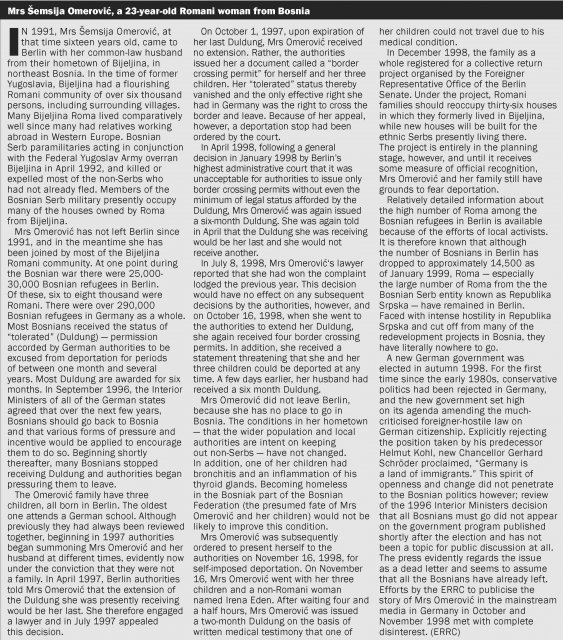
Although visa policies have ceased to be an issue for some Applicant Countries, visas will most likely remain problematic for persons living in Central and Eastern Europe with unclear citizenship or without legal residence in their home country. Many Roma in the Czech Republic, for example, may face visa problems when travelling to other EU countries. The procedural rules and conditions for issuing a visa can also potentially work against Roma if they set down criteria such as legal residence in the state of origin, a clean criminal record or simply the proof of financial resources in dimensions thus far unavailable to most Central European citizens. The same goes for Community measures setting down requirements for the limited sojourn of third country nationals who can travel visa-free. If there is a financial resources stipulation, this might again exclude many Roma from access to the Union. Besides, in this field there are already indications that the abolition of visa requirements may not facilitate the movement of Roma even in cases where they should profit from the new regime. Recently the Czech news agency ČTK reported that Roma from the Czech and Slovak Republic were refused entry by German border guards despite the fact that their papers were in order. The reason given by the German Embassy in Prague was the lack of financial resources deemed adequate. ČTK noted that the majority of people crossing Germany's Eastern borders are not asked to prove the state of their finances.3
A complementary development in the framework of the Schengen Agreement - the Schengen Information System - might make gaining entry even harder. According to the First Protocol to the Amsterdam Treaty, the entire framework of rules set up by the members of the Schengen Convention - the so-called Schengen-Acquis - will be brought under the roof of the European Union, and this will become effective for all of the thirteen Member States that have signed the Schengen Agreement.4 The Member States will therefore be able to avail themselves of the Schengen Information System, a Europe-wide data base which - among other things - lists persons considered automatically inadmissible.
The effect the Schengen Information System is having on the right to privacy is as yet hard to establish. It is however a legitimate question whether for example people with a criminal record will automatically be denied entry. Such precautions might be understandable and even reasonable. However, in states where the rule of law is still weak, and where certain minorities are often made scapegoats without close scrutiny of evidence, a criminal record is easy to come by if a person has the wrong skin color.
b) Asylum and immigration
The Union has always understood itself as a community of common values, with special emphasis on human and civil rights. It has left no doubts that countries with major human rights problems cannot become Members until these problems are resolved, and it has put considerable pressure on the Applicant Countries regarding the human rights situation of their Romani populations. The flipside of this is that the question of whether an EU-citizen has the right to apply for asylum in another Member State has always been hotly debated. One famous example of this tension occurred when Belgian authorities opened their asylum procedures to members of the Basque terrorist organisation ETA. The matter was resolved in a protocol to the Amsterdam Treaty stipulating that applications for asylum from EU citizens are only to be considered by another member state under extremely limited circumstances, virtually excluding the possibility. For Roma from future Member States this means in all likelihood that once their countries become EU members, they will be excluded from asylum procedures. Between now and the moment of accession of certain countries, the Union must continue to closely monitor the human rights situation of Roma in those countries and exercise the necessary pressure until human rights problems in those countries are resolved.
The question of the EU's future approach towards asylum and immigration becomes, however, even more crucial in the case of third-country-nationals - citizens from non-Member States. This concerns thousands of Roma who currently see no future for themselves in their home countries. As the reader is well aware, their situation in many countries is precarious, in a way which exceeds the hardships borne by the majority population by far. Within the impoverished and disrupted societies of Central and Eastern Europe, Roma are confronted with everything from everyday discrimination on account of their skin color to skinhead attacks and pogroms destroying entire villages. The offences committed against them range from not being served in restaurants to the denial of social assistance and the de facto withdrawal of citizenship.
Despite this situation, their applications for asylum or refugee status are in the great majority of cases turned down by the EU Member States. As legal immigration is at this point not an option in most, if not all Member States, Roma revert to illegal border crossing and sojourn on Union territory. Many of them put their lives at risk and sacrifice the last of their possessions rather than stay in their native countries.
It seems at this point unlikely that through the Treaty of Amsterdam the European Union will enable Roma to seek a better future on its territory: its approach on the topics of asylum seekers and refugees is determined by certain Member States' demand for "burden sharing" and a "balance of effort", put into operation mainly by setting down criteria and mechanisms for determining the Member States responsible for considering an application for asylum. The introduction of the "one-chance-only principle" as envisaged by the Dublin Convention will, in all likelihood, increase the phenomenon of "refugees in orbit", persons deported from one Member State to the next in a seemingly endless cycle.
According to the Amsterdam Treaty, common rules and minimum standards for the reception of asylum seekers, the determination of refugee status or displaced person status and the procedural guarantees for granting and withdrawing refugee status are to ensue within five years after the entry into force of the Treaty. In the process of creating this common framework, Member States are bound by the standards set by international law or even domestic law, which in some cases sets down higher standards of protection. Many human rights organisations fear that the minimum standards set out by the Treaty will turn out to be maximum standards, and that the situation of refugees on Union territory will on the whole take a considerable turn for the worse.
Roma from Central and Eastern Europe have, in the past, rarely been successful in their claims for asylum or refugee status, and temporary protection or even suspension of expulsion has typically been the best they could get. They should not expect much improvement from the Amsterdam Treaty. If they resort to illegal immigration, the common measures envisaged for combating illegal immigration and illegal residence will make this enterprise not very promising.
The fact that the Member States have decided to regulate even the conditions for the long-term visa and residence permits of third-country-nationals and are planning to define conditions under which EU-resident third-country-nationals may move to another Member State indicates the determination of the EU to cut down or even entirely exclude legal immigration.
IV. Conclusions and perspectives
In retrospect it must be said that, while not very much was achieved between Maastricht and Amsterdam in the way of practical legislation, there is no doubt that the Maastricht Treaty has been very successful in laying the foundations for the "communitarisation" of previously national policies in the fields of border control, asylum and immigration which is to ensue following Amsterdam. Maastricht set down an objective to be achieved by measures taken on the Community level, which is often defined as the "creation of an area of freedom, security and justice" in the interest of the citizens of the Union. While this is certainly a noble goal, it remains questionable if it can really be achieved through border controls, police co-operation and common rules for asylum and immigration as set down in the Amsterdam Treaty.
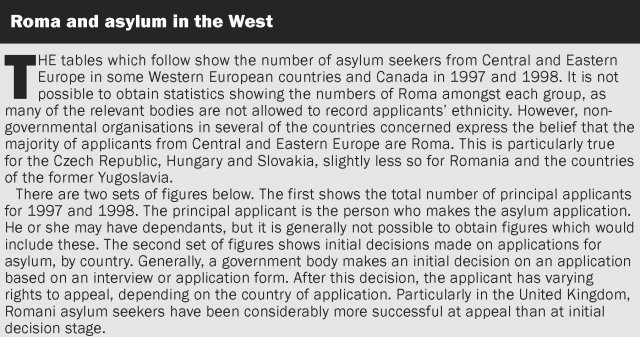
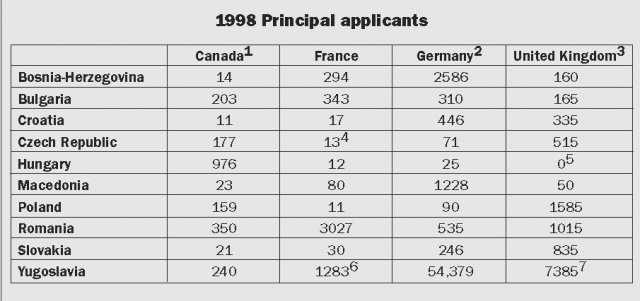
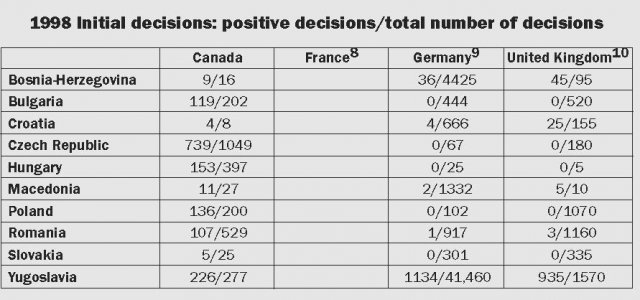
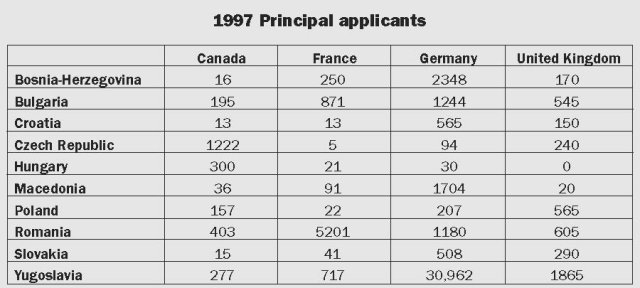
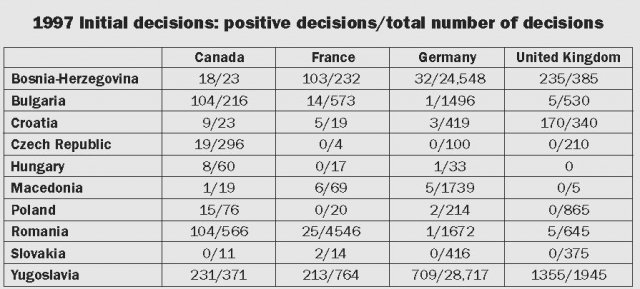
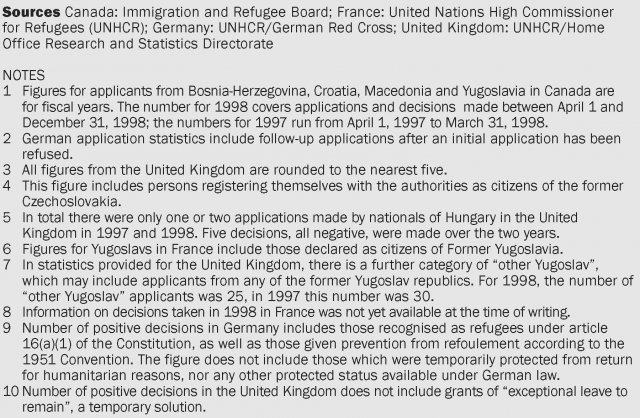
The unification of Europe certainly seems a goal for which it is worth making sacrifices. The people of Europe, however, have to take precautions lest the European Union's very raison d'etre - the well-being of all of Europe's inhabitants and their peaceful coexistence on an equal footing - becomes compromised in the process. The Amsterdam Treaty only opens perspectives; it is not a system of hard-and-fast rules. Although the present state of mind of European leaders makes it not unlikely that the executory measures based on the Amsterdam Treaty will work to the detriment of third country nationals, there is still room for change.
Romani organizations and other public interest groups should make it a priority to lobby for the interests and the rights of third country nationals in the envisaged common framework and bring about the change of course they desire. They should take into account that it will be harder for national NGOs and public interest groups to operate on the EU-level than on the national level. As soon as fundamental policy decisions regarding third country nationals, among them Roma, begin to be made in Brussels, the networks so laboriously built within the national state are in danger of losing some of their effectiveness. It is the task of Romani organizations across Europe to start devising the requisite strategies to ensure that the European Union becomes neither a fortress against a European minority, nor a fortress against humanity, but rather a champion against human suffering and misery.
Endnotes:
- Tanja Koch-Baerman is head of the liaison office of the German state of Mecklenburg-Vorpommern for the Baltic states in Tallinn, Estonia. She has a range of human rights experience, including participation in the OSCE Mission in Bosnia-Herzegovina as Election Supervisor in 1995-1996 and consultancy work for the OSCE's Office for Democratic Institutions and Human Rights in Warsaw.
- Immigration Law Practitioners' Association Update, December 1998, p.4.
- See RFE/RL, January 27, 1999.
- All EU-member states except Great Britain and Ireland, who have the possibility of opting in. There are some special provisions for Denmark.




